How TV Networks Are Approaching Content Marketing

TV networks are chiefly concerned with three things: audience, advertisers, and content
First, they consider who their target audience is. Is it women 18-34 with multiple children living in a high-income household, or is it 16-30-year-old single males interested in extreme sports?
Then, which advertisers would like to reach those audiences? For the first group, it may be CPGs like Procter & Gamble or Unilever. For the second group, it may be Red Bull or Nike SB.
Lastly, they consider what content to develop that will appeal to their core audience while also attracting advertisers.
Now, though, high-quality content isn’t hard to come by.
Nearly every streaming service imaginable is producing award-winning original programming, which is great for viewers, but has forced networks to work harder to hold audience attention.
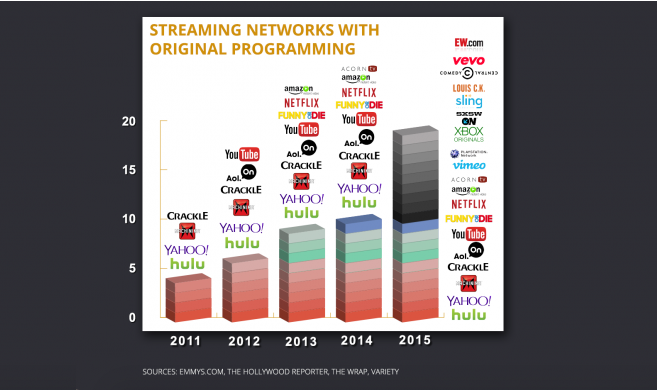
(Chart via Moviepilot)
To do this, networks have invested more resources into content marketing
They are creating immersive online experiences designed to engage audiences in between episode airings, sometimes employing writers to develop entire subplots that exist outside of regular shows.
Additionally, they’ve been producing second screen apps, participating in events like Comic-Con, and giving fans the ability to contribute official key art.
These initiatives have been part of TV marketing for longer than you may think. Since the late 1990’s, actually.
Dawson’s Creek, for example, had a team of writers and content producers developing online-only plotlines, building out a digital yearbook for Capeside High, and giving fans a peek into Joey Potter’s journal.

What has changed since the 90’s is that networks now understand that given the amount of quality content available, audiences will not always be tuning in to their channels. So, they’re not only producing content around their own shows but also around general and celebrity news.
The impact of this is that by providing audiences with relevant content, even if the content doesn’t revolve around the brand – in fact, especially if the content doesn’t revolve around the brand – they can build lasting bonds with audiences in a way that is still mutually beneficial.
This is what some might call the highest form of content marketing.
Below, consider three networks as prime examples for tackling this strategy among the online publishing battlefield:
Syfy Network
Yes, Syfy is home to Sharknado, but it is better known as the network for true sci-fi lovers.
These fans love a variety of Syfy originals like 12 Monkeys and Continuum, but they also enjoy Back to the Future and Game of Thrones.
It’s in Syfy’s best interest to appeal to sci-fi fans with the shows they love, even if they’re not on Syfy. That’s why they created Blastr.com, a behind-the-scenes sci-fi / fantasy portal and editorially independent site.
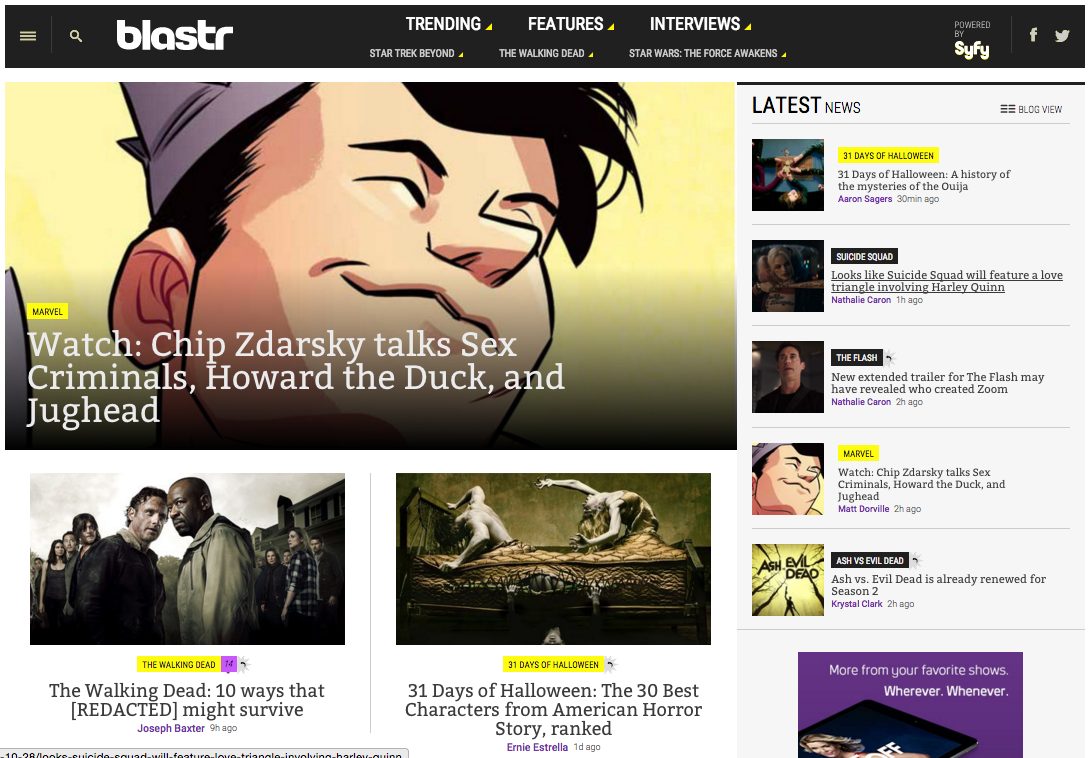
Noticeably absent from the homepage is any mention of Syfy shows. Only a small network logo can be found at the upper right-hand corner of the site.
While content may be created around popular Syfy shows, most of it is focused around hot movies news, TV, games, books, top celebrities and more.
You can find the newest movie trailers, sneak peeks at upcoming TV shows and seasons, exclusive on-set interviews, satire, dispatches from the front lines of science fiction, fantasy and the supernatural, funny stuff and a lot more.
Bravo
There have been lots of fictional magazines associated with movies and TV shows.
In the Devil Wears Prada, it was Runway Magazine by Miranda Priestly. In MTV’s Daria, Waif was the popular magazine dedicated to teen fashion.
Bravo picked up on the notion that die-hard fans would read those magazines if actually produced.
Ahead of the season two premiere for its original scripted series Girlfriends’ Guide to Divorce, a show about a self-help writer who contributes to the fictional lifestyle website, they launched a real destination for the online guide, SheShe.
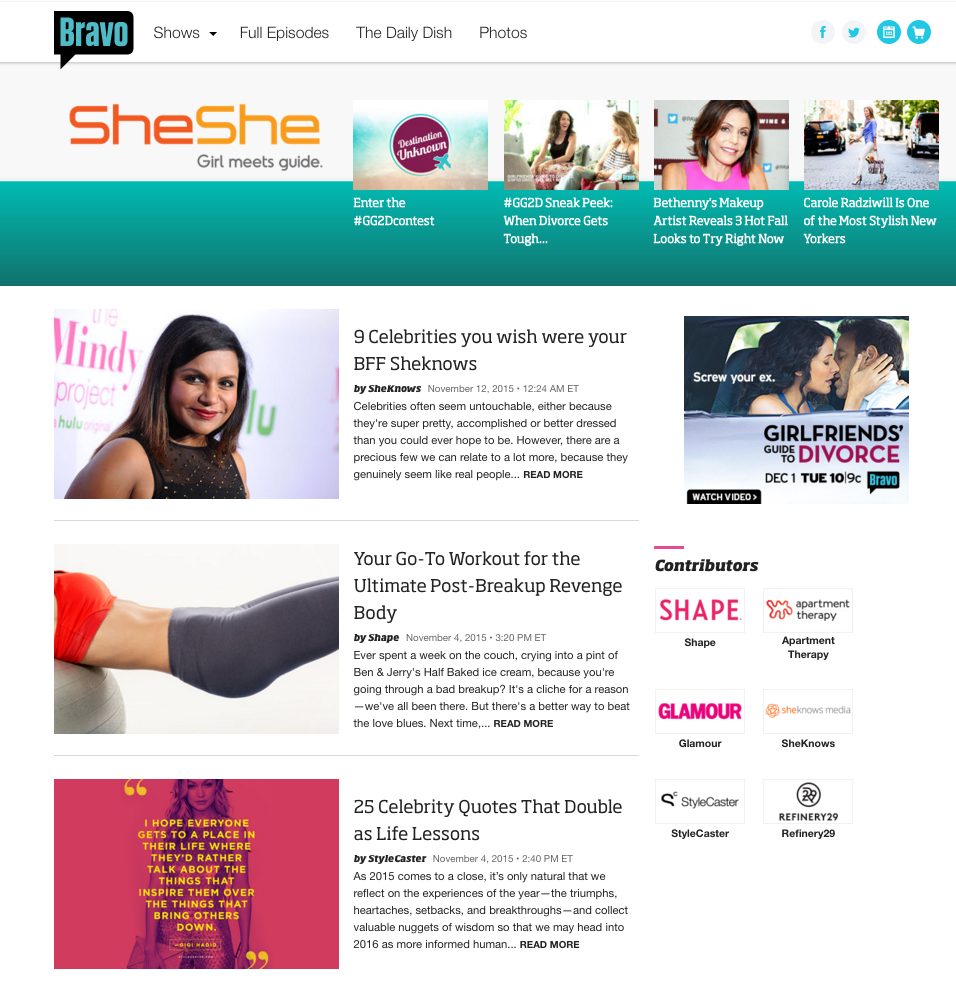
Bravo partnered with fashion and lifestyle publishers like Glamour, Apartment Therapy, Refinery29, Shape, Vulture and SheKnows for content generation on the site, and SheShe readers can find from these publishers the best in food, fashion, beauty, design and pop culture.
The site is a win-win-win proposition as fans of the show get relevant and authentic content from great contributors, the publishers involved increase their potential to attract new readers; and the network is able to natively promote the show in a value-adding context.
Comedy Central
Comedy Central (and Viacom as a whole for that matter) are content pros.
I mean, Hannibal Buress’ much-loved character from Broad City, Lincoln Rice, has “his own” Tumblr, the Al Dente Dentist (cited in the show):
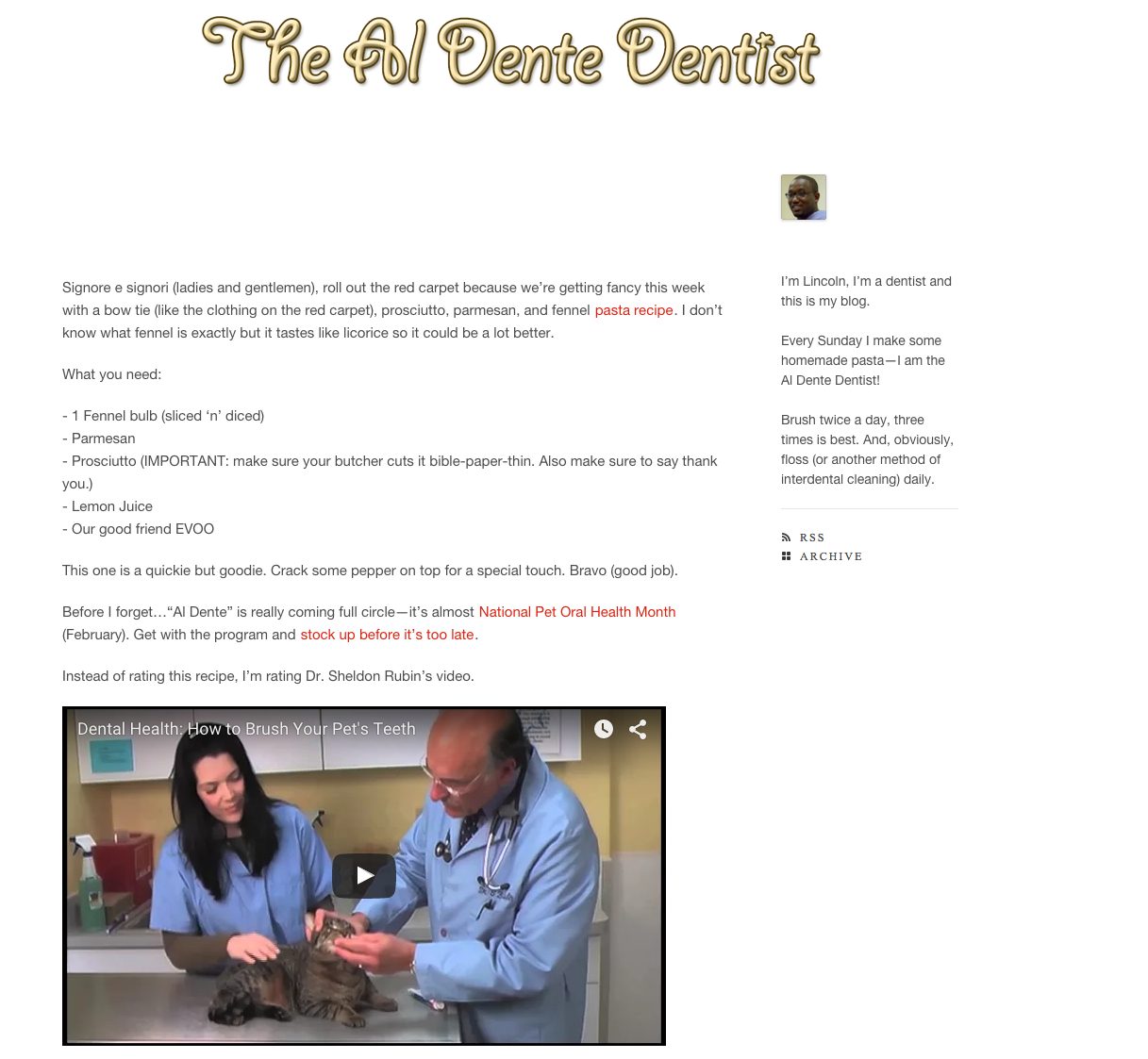
The AL Dente Dentist is an example of second screen content done right, but perhaps even more impressive is the Tosh.0 blog.
Tosh.0, a show perfectly designed for millennials and Generation Z, is built around internet culture and it has a site to match.
While not every laughable and cringe-worthy video can be featured in a 22-minute episode, they can be aggregated on a website, which is exactly what the staff at Tosh.0 does.
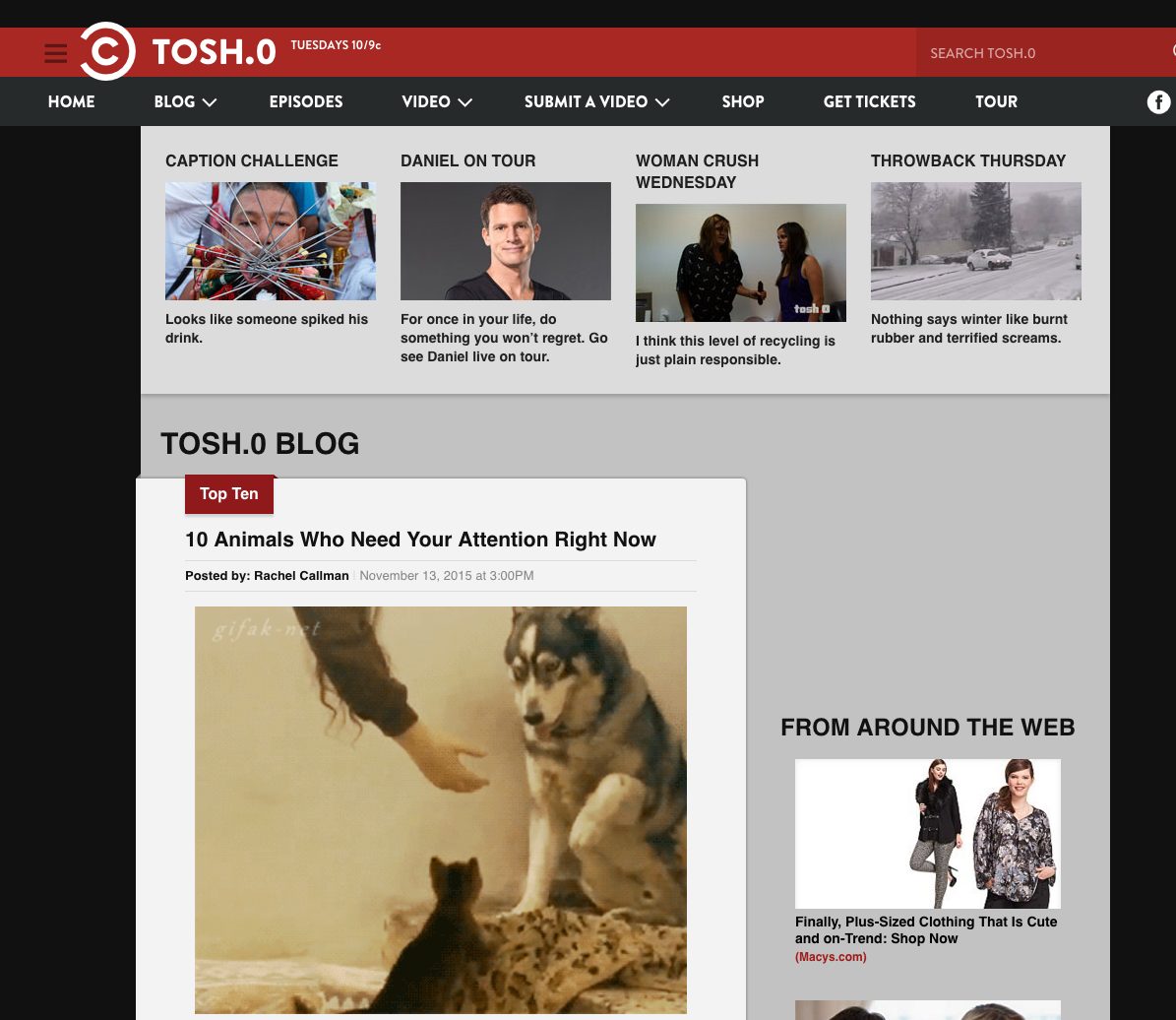
The blog publishes numerous posts throughout the day, and very few of them even mention the show or network.
With microsites for television shows sprouting up all over the net, Tosh.0 Blog truly makes an impact as a standalone destination, acting as a hub that serves the show’s diehard fans. And, as a true publisher, it also contributes to Comedy Central’s bottom line.
Takeaways for TV Networks
- When creating online content, appeal to your demo: It’s not the same thing as appealing to your existing viewers. If you know that your demo is 18-24-year-old women, you also know that not all of them view your network. However, you can still appeal to that demographic with engaging content. Syfy does this particularly well.
- Continue to create immersive second screen experiences: 99% of TV viewers multitask while watching TV,
but only a small percentage actually engage in second screen activities directly related to the program they’re watching. Still, this small subset of diehard fans is your influencers, advocates, and loyalists. You need to do everything you can to empower them to engage further with your brand. - Give fans (and non-fans) exclusive content and news online: Exclusive content is a big draw for your loyal audiences and can also help build new audiences. Viacom, for example, has done a great job generating app downloads by pre-releasing series premieres a week early across its suite of apps. And, between episodes, exclusive content is a great way for you to engage with audiences more than just once a week. With how much content there is from radio to podcasts, Snapchat to linear TV, anything you can do to stay top of mind is key.


